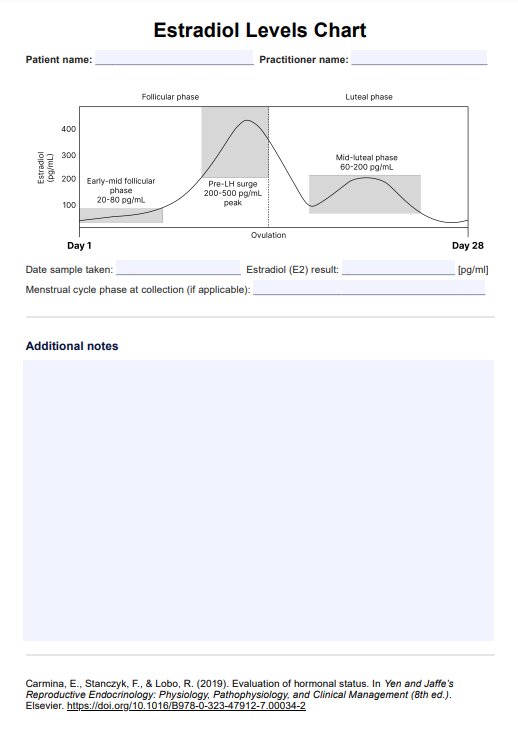As the dominant follicle develops, it secretes estradiol. Estradiol levels continue to increase as the follicle grows, providing negative feedback on LH and FSH levels at low concentrations but causing a significant LH surge once estradiol levels are high enough. This LH surge then triggers ovulation.

Estradiol Levels
Give your patients all the information they need to understand their Estradiol (E2) result with our Estradiol Levels Chart.
Estradiol Levels Template
Commonly asked questions
In the mid-luteal phase, estradiol levels rise again—although not to the same extent as the initial spike just before ovulation. This mid-luteal phase rise is due to the corpus luteum formation, which secretes estradiol, among other hormones. This estradiol secretion is designed to maintain the endometrial lining in preparation for pregnancy. If fertilization does not occur, estradiol and progesterone levels will eventually decline, and menstruation will be triggered.
No. Many individuals will have menstrual cycles that are longer, shorter, or irregular when compared to this standard 28-day cycle, especially postmenopausal women who have much lower estradiol level. Additionally, this chart provides a stylized representation of relative changes in estradiol over an average menstrual cycle. It should not be considered the only normal pattern of estradiol fluctuations.
EHR and practice management software
Get started for free
*No credit card required
Free
$0/usd
Unlimited clients
Telehealth
1GB of storage
Client portal text
Automated billing and online payments











